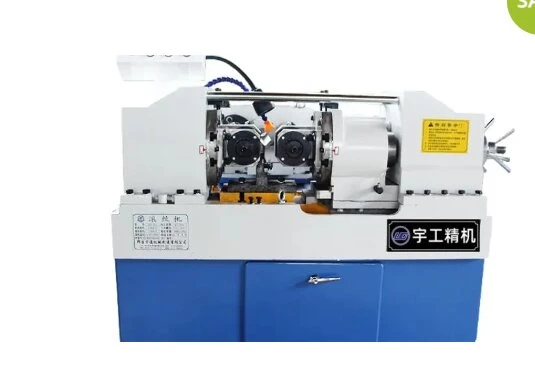
-
 Afrikaans
Afrikaans -
 Albanian
Albanian -
 Amharic
Amharic -
 Arabic
Arabic -
 Armenian
Armenian -
 Azerbaijani
Azerbaijani -
 Basque
Basque -
 Belarusian
Belarusian -
 Bengali
Bengali -
 Bosnian
Bosnian -
 Bulgarian
Bulgarian -
 Catalan
Catalan -
 Cebuano
Cebuano -
 Corsican
Corsican -
 Croatian
Croatian -
 Czech
Czech -
 Danish
Danish -
 Dutch
Dutch -
 English
English -
 Esperanto
Esperanto -
 Estonian
Estonian -
 Finnish
Finnish -
 French
French -
 Frisian
Frisian -
 Galician
Galician -
 Georgian
Georgian -
 German
German -
 Greek
Greek -
 Gujarati
Gujarati -
 Haitian Creole
Haitian Creole -
 hausa
hausa -
 hawaiian
hawaiian -
 Hebrew
Hebrew -
 Hindi
Hindi -
 Miao
Miao -
 Hungarian
Hungarian -
 Icelandic
Icelandic -
 igbo
igbo -
 Indonesian
Indonesian -
 irish
irish -
 Italian
Italian -
 Japanese
Japanese -
 Javanese
Javanese -
 Kannada
Kannada -
 kazakh
kazakh -
 Khmer
Khmer -
 Rwandese
Rwandese -
 Korean
Korean -
 Kurdish
Kurdish -
 Kyrgyz
Kyrgyz -
 Lao
Lao -
 Latin
Latin -
 Latvian
Latvian -
 Lithuanian
Lithuanian -
 Luxembourgish
Luxembourgish -
 Macedonian
Macedonian -
 Malgashi
Malgashi -
 Malay
Malay -
 Malayalam
Malayalam -
 Maltese
Maltese -
 Maori
Maori -
 Marathi
Marathi -
 Mongolian
Mongolian -
 Myanmar
Myanmar -
 Nepali
Nepali -
 Norwegian
Norwegian -
 Norwegian
Norwegian -
 Occitan
Occitan -
 Pashto
Pashto -
 Persian
Persian -
 Polish
Polish -
 Portuguese
Portuguese -
 Punjabi
Punjabi -
 Romanian
Romanian -
 Russian
Russian -
 Samoan
Samoan -
 Scottish Gaelic
Scottish Gaelic -
 Serbian
Serbian -
 Sesotho
Sesotho -
 Shona
Shona -
 Sindhi
Sindhi -
 Sinhala
Sinhala -
 Slovak
Slovak -
 Slovenian
Slovenian -
 Somali
Somali -
 Spanish
Spanish -
 Sundanese
Sundanese -
 Swahili
Swahili -
 Swedish
Swedish -
 Tagalog
Tagalog -
 Tajik
Tajik -
 Tamil
Tamil -
 Tatar
Tatar -
 Telugu
Telugu -
 Thai
Thai -
 Turkish
Turkish -
 Turkmen
Turkmen -
 Ukrainian
Ukrainian -
 Urdu
Urdu -
 Uighur
Uighur -
 Uzbek
Uzbek -
 Vietnamese
Vietnamese -
 Welsh
Welsh -
 Bantu
Bantu -
 Yiddish
Yiddish -
 Yoruba
Yoruba -
 Zulu
Zulu
Thread Rolling Tool Solutions for Efficient Machining and Precision Manufacturing Services
The Importance of Thread Rolling Tool Service Enhancing Precision in Manufacturing
In the fast-paced world of manufacturing, efficiency and precision are paramount. One of the key techniques that has emerged to meet these demands is thread rolling. Thread rolling is a cold-forming process that creates threads on a workpiece by displacing material, resulting in a strong, precise, and consistent finish. However, to achieve optimal results in thread rolling, the service and maintenance of thread rolling tools are crucial. This article delves into the significance of thread rolling tool service and how it contributes to manufacturing accuracy and productivity.
Understanding Thread Rolling
Before diving into the specifics of tool service, it is essential to understand what thread rolling entails. The process utilizes specially designed cylindrical dies to shape the material without removing any excess material. Unlike traditional machining processes, thread rolling enhances the strength of the threads by compressing the material, making it less susceptible to wear and fatigue. This technique is widely used in industries such as automotive, aerospace, and construction, where reliable threaded fasteners are critical.
The Role of Thread Rolling Tools
Thread rolling tools are the backbone of the thread rolling process. These tools, including dies and fixtures, are designed to handle various materials, thread patterns, and sizes. The precision of these tools directly affects the quality of the threads produced. Over time, however, exposure to heavy use can lead to wear and tear, resulting in diminished performance and potential defects in the final product. This is where thread rolling tool service comes into play.
Importance of Tool Service
thread rolling tool service

1. Maintaining Precision Regular servicing of thread rolling tools ensures they remain sharp and accurate. Dull or worn tools can lead to poorly formed threads, resulting in assembly issues, weak joints, and increased production costs. By investing in routine maintenance and repairs, manufacturers can uphold the precision required for high-quality production.
2. Extending Tool Lifespan Just like any piece of machinery, thread rolling tools have a finite lifespan. However, with proper care and timely servicing, their durability can be significantly extended. Regular inspections and maintenance can identify subtle issues before they escalate into larger problems, saving time and money in the long run.
3. Improving Production Efficiency Well-maintained tools operate more smoothly and efficiently. This efficiency translates into faster production rates and reduced downtime for tool changes. When tools are consistently performing at their best, manufacturers can meet production targets more reliably, which is crucial in today’s competitive market.
4. Cost-Effectiveness Although the initial investment in tool service may seem significant, the long-term cost savings are substantial. Reducing scrap rates, minimizing downtime, and prolonging tool life all contribute to a healthier bottom line. Furthermore, maintaining high-quality output helps preserve a manufacturer’s reputation, which can lead to increased orders and customer loyalty.
5. Customization and Upgrades Thread rolling tool services often offer the option for customization based on specific production needs. This adaptability ensures that manufacturers can pivot quickly to accommodate new designs or changes in production processes. Additionally, tool services may provide upgrades that incorporate the latest technology, enhancing performance and efficiency.
Conclusion
In conclusion, the service of thread rolling tools is an essential aspect of modern manufacturing that should not be overlooked. By prioritizing tool maintenance, manufacturers can ensure precision, extend the life of their equipment, improve production efficiency, and achieve significant cost savings. As the industry continues to evolve and demand for high-quality threaded fasteners grows, the role of thread rolling tool service will become even more critical in meeting these challenges head-on. Investing in proper service and maintenance is not merely an operational choice; it is a strategic move towards sustainable and efficient manufacturing practices.
